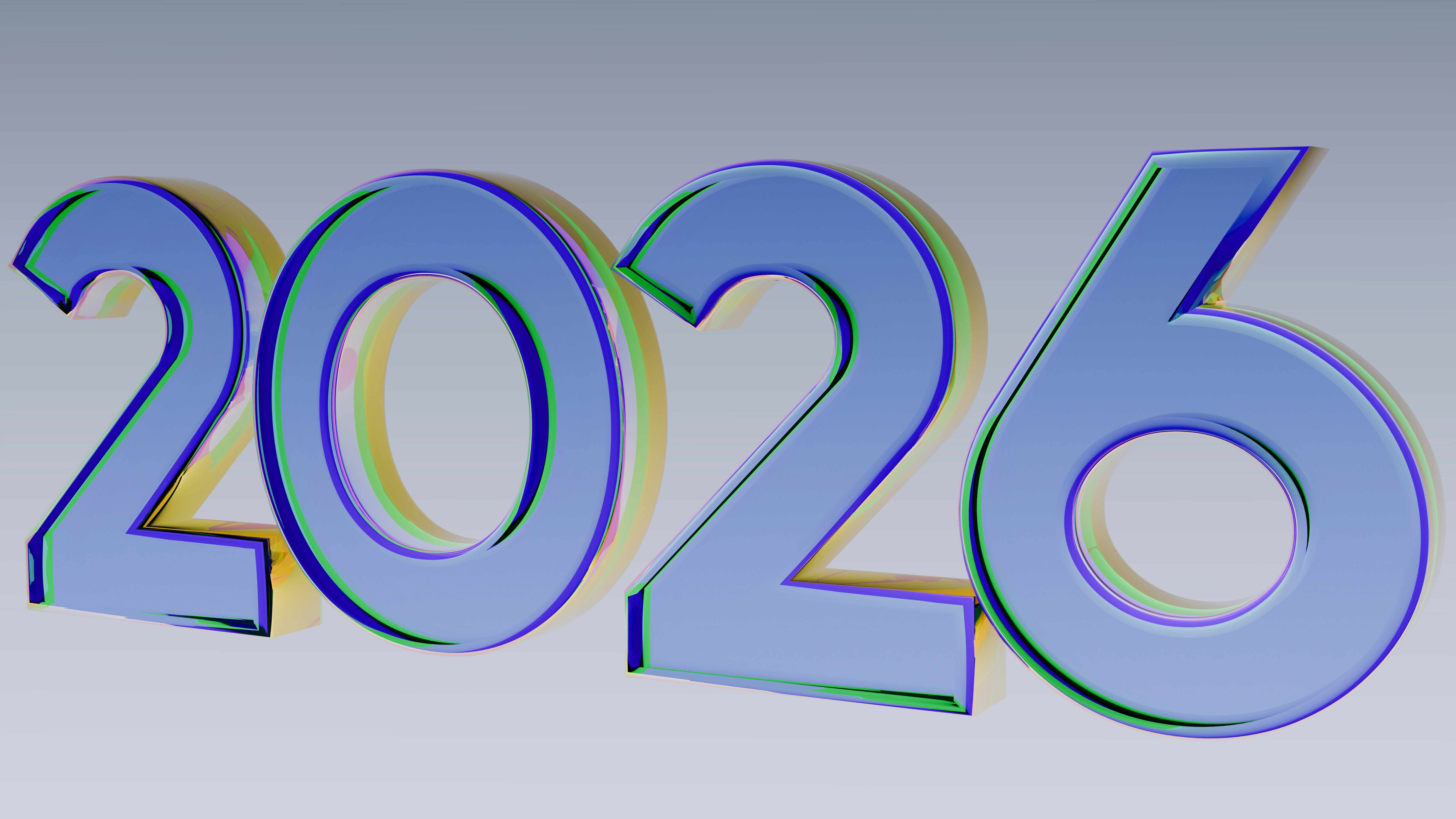
UK Space Team Structures Explained: Who Does What in a Modern Space Department
The UK space sector is rapidly expanding. With growth in satellite design, Earth observation, communications, launch systems, space science, downstream applications, and regulatory and operational services, there’s rising demand for skilled professionals across many disciplines. Building a high-impact space organisation requires well-defined team structures, clear roles, strong collaboration, and alignment across engineering, science, operations, regulation, and commercial functions.
If you are applying for roles via UKSpaceJobs.co.uk or hiring into your company, this guide will help you understand the principal roles you’ll find in a space team, how they interact during mission lifecycles, what skills UK employers expect, salary norms, common challenges, and best practice for structuring space teams that succeed.
Why Structure Matters in Space Organisations
Space projects are complex, high-risk, and resource-intensive. Mistakes in specifications, design, testing, or operations can cause mission failures or cost overruns. With regulatory oversight, safety constraints, launch timelines, environmental challenges (radiation, thermal extremes, vacuum), and long product life cycles, clarity of responsibilities is essential. Well-structured teams reduce delays, encourage accountability, facilitate innovation, and make scaling more manageable.
Key Roles in a Modern UK Space Department
Here are typical roles you’ll find in a mature space organisation. In smaller companies or early-stage projects some of these roles will be combined; in larger ones, many are specialised and distinct.
Space Systems Engineer / Architect
This senior role defines system-level requirements and ensures alignment across subsystems (satellite bus, payload, power, communications, thermal etc.).
What they do:
Capture and refine mission requirements (orbit, duration, communications, ground segment, payload).
Perform system trade-off studies (mass, power, cost, redundancy, performance).
Define interfaces between subsystems and ensure integration feasibility.
Ensure the system design meets regulatory, safety, reliability, and mission goals.
Skills: Strong systems thinking, experience with mission planning, risk analysis, cross-disciplinary coordination, knowledge of orbital mechanics, power/thermal budgets, attitude control, reliability engineering.
Satellite / Payload Engineer
These engineers design the satellite’s payload – the sensors or instruments used for Earth observation, communications, scientific measurement etc.
What they do:
Define payload requirements (spectral bands, resolution, data rates, sensitivity).
Choose or design sensors/instrument hardware; specify optics, detectors, filters.
Ensure alignment, calibration, environmental tolerance (temperature, vibration, radiation).
Work with thermal, mechanical, structural engineers to ensure payload survives launch and space environment.
Skills: Optics, detector physics, calibration, sensor integration, environmental testing, signal processing.
Avionics / Electrical Engineer
Handles the power, data, control electronics, bus architecture, wiring, OBC (on-board computer) and electrical subsystem designs.
What they do:
Design power systems or solar panels, battery systems, power regulation, distribution.
Design data handling, bus architectures (I2C, SPI, CAN, SpaceWire etc.), telemetry, fault tolerance.
Ensure redundancy, protection against single points of failure, electrical noise considerations.
Collaborate with software and firmware for control, telemetry, data flow.
Skills: Circuit design, PCB design, power electronics, EMI/EMC, space-qualified components, connector/wiring best practices, reliability.
Mechanical / Structural / Thermal Engineer
Ensures the satellite or spacecraft structure supports the mission, survives launch loads, maintains alignment across operational temperatures, and manages thermal conditions in space.
What they do:
Structural design: frames, panels, payload mounting, mechanical stiffness.
Thermal analysis: passive and active thermal control, radiator sizing, insulation, heat pipes.
Vibration/shock qualification and analysis.
Material selection with consideration of mass, radiation, outgassing, thermal expansion.
Skills: Finite element analysis (FEA), thermal modelling, vibration & shock test regimes, materials science, mechanical CAD, environmental test familiarity.
Propulsion / Attitude and Orbit Control Systems (AOCS) Engineer
Responsible for maintaining orientation (attitude) and orbital adjustment/maintenance if propulsion is onboard.
What they do:
Design or specify thrusters, reaction wheels, control actuators.
Develop attitude control algorithms, sensors (star trackers, gyros, sun sensors).
Plan orbit maneuvers, station keeping, de-orbiting or disposal maneuvers.
Monitor fuel or reaction wheel usage, ensure safety margins.
Skills: Control theory, orbital mechanics, dynamics, sensor fusion, flight dynamics, thruster or actuation hardware knowledge.
Flight Software / Embedded Systems Engineer
Software is the decision-maker onboard; it must be reliable, efficient, and robust.
What they do:
Develop flight code: command and telemetry, fault detection, command sequencing, data handling, time synchronisation.
Ensure software works in constrained resources (memory, power), is deterministic, handles failures, including redundant modes.
Perform simulation, hardware-in-the-loop (HIL) testing; verify code against requirements.
Ensure secure boot or resilience to radiation events or bit flips.
Skills: Embedded C/C++, real-time systems, safety-critical software, simulation/test environments, version control, experience with space qualification of software.
Ground Segment / Operations Engineer
Ground segment includes ground stations, mission control, data reception, processing, tasking of satellite.
What they do:
Develop and maintain ground station hardware and software.
Monitor telemetry and health of spacecraft; plan commanding uploads, schedule passes.
Process data from payloads; manage data pipelines, archives.
Support mission operations and fault recovery.
Skills: Communications (RF / S-band / X-band etc.), scheduling, data processing pipelines, radio hardware, operations procedures, telemetry analysis.
Test, Verification & Validation Engineer
Critical role to ensure hardware and software meet design specifications and mission readiness.
What they do:
Build test plans and testbeds for environmental tests (vibration, thermal cycling, vacuum etc.).
Perform functional testing, interface verification, qualification testing.
Hardware-in-the-loop, software simulation, integration tests.
Maintain verification traceability between requirements, design, test results.
Skills: Test engineering, environmental test standards, instrumentation, data logging, quality documentation, simulation tools.
Reliability / Quality Assurance Engineer
Ensures mission success over lifetime, with margins for degradation, and that processes are robust.
What they do:
Plan and execute reliability testing and modelling (accelerated lifetime, radiation, thermal cycles).
Monitor component failure modes; ensure supplier quality; document quality control.
Support process certification; ensure compliance with relevant standards (e.g. ECSS, ISO).
Conduct root cause investigations for failures or anomalies.
Skills: Reliability engineering, quality systems, root-cause analysis, statistical methods, standard compliance, supplier evaluation.
Project / Programme Manager
Keeps projects on schedule, within budget, according to scope, managing risks, communications, stakeholder alignment.
What they do:
Set milestones, track deliverables across engineering, test, operations, procurement.
Liaise with stakeholders: funders, regulatory authorities, partners, customers.
Manage risk registers, change control, documentation.
Allocate resources, ensure cross-team coordination.
Skills: Space project delivery experience, stakeholder engagement, systems engineering understanding, strong communication, scheduling and risk management.
Mission / Science Lead
For science missions or Earth observation, scientific users or mission lead define the scientific objectives and ensure data or payload design supports those objectives.
What they do:
Define mission goals, scientific or commercial objectives.
Work with payload engineers to ensure sensor capabilities and data requirements are met.
Oversee data analysis pipelines; ensure calibration and validation.
Publish results, or deliver service products to customers or end users.
Skills: Domain expertise (remote sensing, astrophysics, Earth science etc.), data analysis, calibration, mission planning, scientific rigour.
Regulatory, Standards & Compliance Engineer
Space is heavily regulated: spectrum, safety, licensing, frequency allocation, orbital debris, export controls etc.
What they do:
Ensure compliance with national and international regulation: satellite licensing, spectrum use, export regulations.
Ensure hardware and operations meet orbital debris standards and mitigate collisions.
Maintain documentation, safety cases, radiation tolerance, component qualification.
Work with UK Space Agency or relevant authorities for permits etc.
Skills: Knowledge of regulation and licensing in UK and elsewhere, compliance standards (e.g. ECSS, ITU, CAA or equivalents), export control regimes, orbital debris mitigation.
Data Engineer / Data Scientist (Space Data Applications)
Satellite missions and Earth observation generate lots of data; downstream, many roles apply analytics, AI or ML.
What they do:
Process raw data: calibration, geo-rectification, sensor correction.
Build data pipelines, feature extraction, machine learning for detection, forecasting, climate modelling etc.
Develop tools for end users: dashboards, analytics, data products.
Ensure data quality, format compliance, metadata, documentation.
Skills: Machine learning, Python, data processing, remote sensing tools, cloud or HPC, mathematical modelling, domain knowledge.
Systems Integration / Assembly, Integration & Test (AIT) Engineer
If building physical satellites, spacecraft, or subsystems, AIT roles assemble components, integrate them, and test.
What they do:
Mechanical assembly, alignment, bonding, wiring between subsystems.
Integration of payload with bus, thermal and structural interfaces.
Perform integration testing: fit-check, interface integrity, early diagnostics.
Coordinate with test engineers for environmental qualification.
Skills: Hands-on assembly, wiring, alignment, clean-room protocols, mechanical integration, test rig usage, documentation.
Collaboration Across the Space Mission Lifecycle
Here’s how the roles above typically interact over the lifecycle of a space mission or satellite project.
Concept & Feasibility Mission / Science Lead with Systems Engineer define mission goals; Project Manager and Architect run trade studies; Regulatory engineer assesses licensing constraints; Payload engineers sketch sensor requirements; Avionics, Mechanical, AOCS teams evaluate feasibility.
Design Phase Systems engineer drills into subsystem requirements; Payload, Electrical, Mechanical, Avionics engineers design their respective elements; Software / Flight software begins architecture; Thermal, power, structure all design interfaces; Regulatory defines standards to follow; Mission lead ensures scientific needs are met.
Integration & Test AIT engineers assemble subsystems; Test / Verification teams run qualification environmental testing; Software and Flight Software tested in simulation and hardware-in-the-loop; Ground Segment teams begin operations planning; Reliability tests begin.
Launch & Deployment Operational readiness: ground-stations ready; Orbit or launch service acquired; Avionics, propulsion and AOCS ensure attitude/orbit; Payload turned on and calibrated; Flight software managing health and safety.
Operations / Mission Life Operations Engineer monitors telemetry; Ground Segment handles command uplinks and passes; Payload data is downlinked and processed; Reliability / QA tracks system health; Anomalies handled via root-cause; Project manager tracks mission KPIs; Regulatory ensures compliance with orbital debris, licensing etc.
End-of-Mission / Disposal / Next Generation Decommissioning or safe disposal; archival of data; lessons learned feeding back into next mission; component refurbishment or reuse if relevant; handing over to downstream services or data users.
UK Skills, Qualifications & Backgrounds Employers Expect
Strong STEM degrees: aerospace, mechanical, electrical, physics, systems engineering etc. Advanced degrees (MSc, PhD) especially for specialist roles or research missions.
Experience or familiarity with space- or aerospace standards, environmental testing, satellite buses, mission operations.
Programming, firmware, embedded, software skills for flight software or data systems.
Hands-on prototyping, integration, mechanical or electronics testing.
Knowledge of mission planning, safety, compliance, regulations, licences.
Experience with simulation, modelling, thermal / structural / orbital mechanics.
Soft skills: communication, documentation, cross-disciplinary work, problem solving, resilience.
Salary Ranges & Career Progression in the UK Space Sector
Salaries vary by role, seniority, employer (private, government, academic), and location (London / South East / Harwell / tech hubs).
Rough guidance:
Entry / Graduate Engineer or Payload / Avionics Junior: ~ £30,000 – £50,000
Mid-Level Engineers (Mechanical, Electrical, Payload, Software, AOCS): ~ £50,000 – £80,000
Senior Engineers or Specialist Roles (Thermal, Propulsion, Systems Architect): ~ £80,000 – £110,000+
Project / Programme Managers: ~ £70,000 – £120,000+ depending on mission complexity
Mission / Science Leads, Heads of Engineering or Operations: £100,000+ often with responsibility for large teams, budgets, regulatory or safety accountability
Career progression often moves from technical junior → specialist roles → lead or principal engineer → management / programme roles or mission lead tracks. Some engineers transition to downstream roles (data, analytics, operations, commercial).
Trends & Challenges in the UK Space Sector
Trends:
Rapid growth in small satellite and CubeSat missions.
Expansion of Earth observation, climate monitoring, space-based communications (e.g. LEO constellations).
Focus on downstream applications: using satellite data for climate, agriculture, navigation, security.
Increasing interest in space launch capabilities and spaceport development.
Use of AI and ML in signal processing, orbit determination, anomaly detection.
Sustainability: orbital debris mitigation, end-of-life disposal, green propulsion, low carbon manufacturing.
Challenges:
Regulation, licensing, frequency allocation and international compliance can be slow and complex.
Highly constrained environments: mass, power, thermal, reliability demands.
Long lead times for component qualification, environmental testing, launches.
Financial and risk pressure – missions are expensive, and failures costly in reputation.
Talent shortage in specialist areas: thermal engineering, propulsion, systems architecture, flight software.
Supply chain constraints for space-qualified components.
Ensuring reliability in severe environments (radiation, vacuum, temperature extremes).
Best Practices for Structuring Space Teams in the UK
Define core roles early: systems engineering, mission lead, regulatory/safety, integration, test, operations.
Emphasise systems architecture that spans across subsystems so design trade-offs are visible early.
Invest in environmental and qualification infrastructure (thermal, vibration, electromagnetic, vacuum).
Robust flight software development with HIL, simulation, redundancy, record & playback, error recovery.
Effective communications between payload, mechanical, electrical, software, and mission teams. Regular design reviews.
Compliance and regulation must be deeply woven in from the start, not retrofitted.
Data capture during operations: telemetry, performance, anomalies to feed reliability improvements.
Build for modularity so payloads or subsystems can be updated or reused.
Strong project management and risk control to avoid delays and scope creep.
Invest in people: cross-training, skills in mission operations, flight dynamics, regulatory, system design, mentoring, apprenticeships.
Day-in-the-Life Snapshots
Scenario A: Small Satellite Startup
Morning: Systems engineer leads mission kickoff; payload engineer defines imaging or communication modes; avionics team working on power budget; flight software engineers set up build pipeline; regulatory engineer begins license application.
Midday: Mechanical/structural team analysing vibration reports; thermal team simulating heating in sunlight & shadow; ground segment team building command & telemetry interfaces; operations planning for ground passes.
Afternoon: Integration & test bench assembled; functional tests on electronics; software engineers test firmware on hardware; system architect checks interface mismatches; mission scientist reviews calibration needs.
Evening: Project manager reviews schedule; risk items flagged (component lead times, test delays); documentation updated; suggestions for next day's test sequence.
Scenario B: Earth Observation Mission in Government / Academic Context
Morning: Payload scientist and mission lead review imaging data; ground station team processes recent passes; test engineer assesses sensor drift; data scientist calibrates imagery for atmosphere distortion.
Midday: Avionics team troubleshooting telemetry dropouts; mechanical team works on pointing stability; software team patches bit error detection; regulatory officer ensures spectrum licensing compliance; operations schedule next pass.
Afternoon: Thermal engineering team monitors passive thermal model vs in-orbit data; reliability team monitors battery degradation; ground station operations handle data archive and distribution; mission scientist analyses data quality.
Evening: Review mission KPIs; plan calibration or correction passes; team meets to discuss data product quality; schedule maintenance or updates; disseminate results to stakeholders.
FAQs
Do I need experience in aerospace to enter the space sector? Not always. Many roles value transferable engineering, software, electronics, or physics experience. Demonstrable projects, internships or academic space missions help significantly.
Is the UK space sector well-funded and stable for careers? It’s growing quickly. The UK government and private investment have increased, especially in small satellites, Earth observation, launches, and downstream applications. However, risk remains: funding tends to come in waves, and mission failure or delays can impact teams significantly.
How important is regulatory knowledge? Very. Licences for satellites, spectrum, launch, space debris mitigation, export controls are all relevant. Engineers, project leads or dedicated regulatory/compliance roles that understand these areas are in high demand.
What locations in the UK are space jobs concentrated? Harwell (Oxford), Leicester, Bristol / South West, London, Aberdeen, Scotland (with several companies and institutions), and increasingly new spaceports (Cornwall, Shetland, etc.). Research parks and innovation hubs such as Space Park Leicester are becoming focal points. Scotland is notable for satellite manufacturing and Earth Observation roles.
Final Thoughts
The UK space sector offers exciting and impactful career opportunities—whether in engineering, science, operations, software, regulatory, or data roles. To succeed, both job-seekers and organisations need clarity of role definitions, robust systems practices, early integration of test and compliance, and strong collaboration between disciplines.
For those applying to roles, aligning your skills (flight software, avionics, systems engineering, mission operations, payloads) with the demands listed above will strengthen your applications. For hiring organisations, structuring teams with clear interfaces, strong test and qualification pipelines, regulated compliance, and mission data feedback will increase the likelihood of delivering successful, sustainable space missions from concept through to operations.
The UK is setting ambitious goals in space exploration, satellites, launch capability, downstream services, and science missions. With the right team structure and talent, UK space companies and institutions can not only compete globally but lead in innovation, reliability, sustainability, and impact.


